A lot of people buy an inflatable boat as their main boat, but there are instances where you might want to tow your inflatable boat using your mother boat.
Whether you’re using your dinghy as a tender for your main boat, because of a mechanical failure or inability to stow your boat aboard the larger vessel, it’s a good idea to know how to properly tow a dinghy.
Towing might seem relatively simple and easy, looking at it from afar. Just tie a knot and tow. However, it does take careful preparation to ensure the success of the entire operation, otherwise, you will end up damaging your dinghy and possible your mother ship.
Here is a complete guide on how to properly tow your inflatable boat.
Contents
What you Need to Know before Towing a Dinghy
Aside from the procedure itself, it is also important to know bits and pieces that can make or break the entire process. Here are a few things to note before diving into the towing operation.
Towing Bridles
Towing bridles serve as support lines that aid in balancing the inflatable boat while it’s being towed; these are tied to the D-rings of your inflatable boat and can be purchased in many marine retail stores.
The most common mistake people make when towing smaller watercraft is not using a bridle. Most people only attach a single support line to the central D-ring of the inflatable boat, which may result in the destabilization of the towed boat, or damage to the D-ring.
Another error people commit is improper usage of towing bridles. Some only tie the bridle to the main tow line, restricting the towed boat’s movement and adding tension on it. This may cause your inflatable boat to take on water or to flip.
There are 2 types of bridles that you can use for towing:
- 2-Point Bridle
- 3-Point Bridle
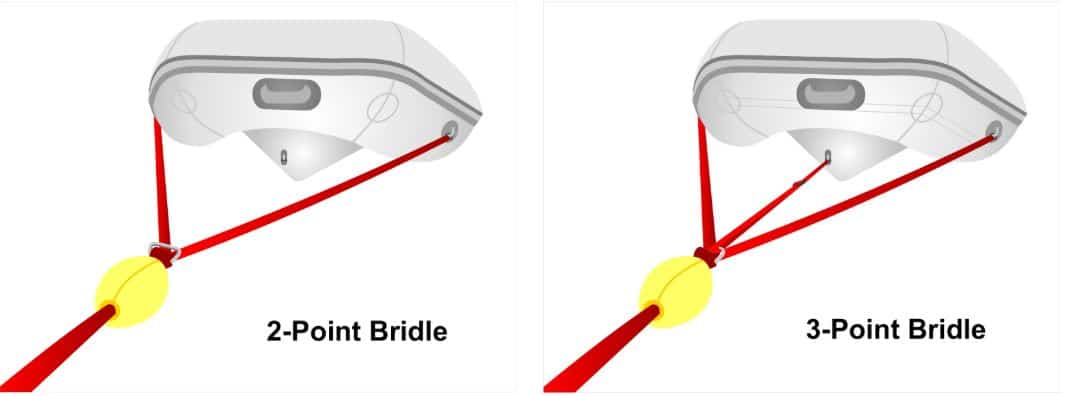
2-point bridles can provide enough support to do the job effectively, but they risk straining the attachment ends on your inflatable boat.
3-point bridles, on the other hand, equally distribute tension on the three attachment points on the boat, offering equal distribution of weight and better stability.
Bowline Knots
Every good sailor knows how to tie a bowline knot. This is one of the most used knots on the sea.
You will have to learn how to properly tie a bowline knot, for this is specifically used for connecting tow lines used in towing operations. It is mainly used to form a loop at the end of a rope, properly securing it to where it’s attached.
Don’t worry, bowline knots are relatively easy to tie and untie. Here’s how you can do it in four simple steps:
- Place the rope on your hand with its free end hanging down, then form a small loop in the line on your hand;
- Put the free end through the loop, and wrap it around the line;
- Let the end pass through the loop again; and
- Tighten the knot by pulling the end whilst holding the standing line.
To help you understand it better, here is an illustration on how to do it step-by-step.
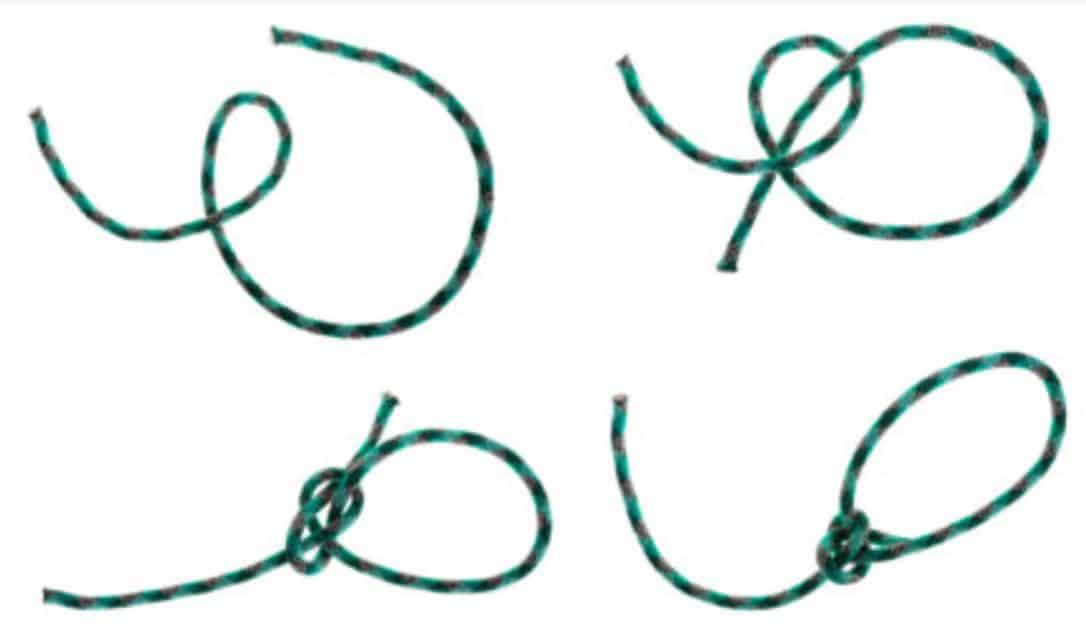
Here is an instructional video on tieing a bowline knot as well:
How to Properly Tow an Inflatable Boat
Now that you have acquired basic knowledge about things that are involved in towing a boat, it’s high time that you learn how to properly execute it Sailor!
You will find a step-by-step guide on how to properly tow your inflatable boat below.
Preparation
Step 1: Securing the Tow Line
The first thing you have to do is to secure your tow line (aka painter). Start with connecting the main tow line to the middle cleat on the stern of the larger vessel. Use a bowline knot to attach the rope to a ring.
IMPORTANT: You need to use a floating line as the tow line, so it doesn’t sink underwater and get caught up in the main ship’s rudder or propeller.
Step 2: Securing the Towing Bridles
The next step requires you to secure the attachment of your bridle. Attach the rope to the D-rings located on the starboard and port side of your inflatable boat. Secure the end of the bridles with a bowline knot. You can, then, attach these to the ring connecting it with the tow line you have prepared.
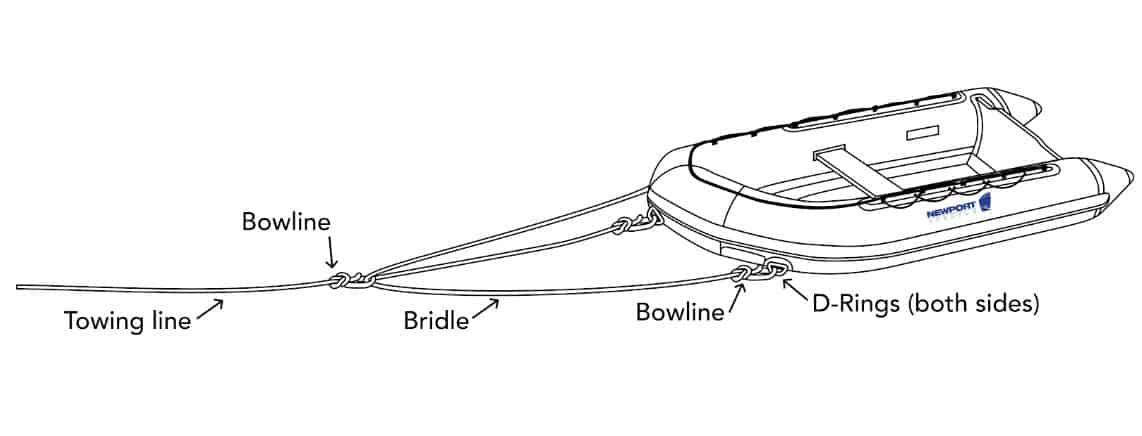
Step 3: Checking Tension on the Ropes
Make sure that all parts of the rope have equal tension on them; this is to ensure the equal distribution of weight to all sides of the boat. Properly inspect the connection to prevent your boat from capsizing as you tow it.
Towing
After carefully attaching your inflatable boat to your main boat, you are now ready to go. But, make sure to remember these things to prevent accidents and problems along the way.
Tow Empty Inflatable Boats
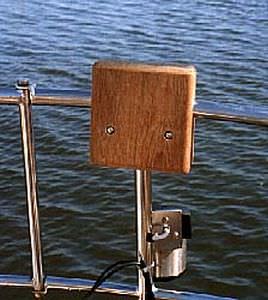
Avoid towing a loaded inflatable boat. Baggages onboard will glide side to side causing uneven distribution of weight; this can put tremendous strain on your bridles.
It is also highly inadvisable to tow your boat with a motor mounted on it, because if the dinghy flips over, you will damage the motor.
If you are 100% sure that water conditions will remain calm, you may choose to leave the motor on the dinghy, but you need to at least move the motor out of the water to lessen drag.
It’s best to take the outboard motor off the boat though and attach it to a rail mount on the mother ship.
Correct Towing Position
While towing your inflatable boat behind you, ensure that the boat is properly aligned forming a V-wake. This prevents uneven tension on either side of the boat, reducing the strain on your bridles.
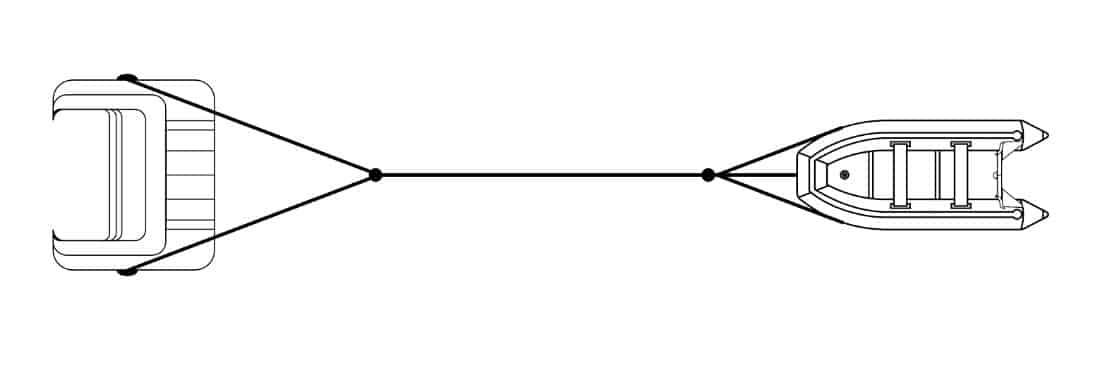
Proper Speed Limit
The recommended maximum speed you can go whilst towing an inflatable boat is 8 knots. It is not advisable to tow at high speeds because it may pose risks and cause many issues along the way.
What to do during Rough Conditions
You cannot assure smooth sailing, especially out on the open sea.
If you are towing a dinghy on rough seas, here are some tips you can do to alleviate the situation.
When waves cause the towed inflatable boat to strike the main vessel
- You can try to lengthen the painter to put more distance between the two boats. This will give the towed boat a chance to recover after every wave, without the risk of hitting the main boat.
- Another option is to pull the inflatable boat closer to the stern and rig a line on each towing eye out to the stern quarters of the main boat. This will prevent the towed boat from lurching forward, since it will snub against the stern due to tight pull from the tow lines. It also prevents the towed boat from twisting around even during violent waves.
When strong wind and waves risk capsizing the inflatable boat
- When the risk stems from strong winds, you can easily solve remedy the situation by adding a little weight aboard your inflatable boat. Just make sure that it will not glide side to side on the boat. Pouring a bucket of water in the boat can do the trick.
- To protect the inflatable boat from strong wind and waves, consider placing it alongside the main boat. You can move the painter attachment point forward to enable the boat to huddle against the side hull.
When the inflatable boat gets overturned in the water
- Recover the inflatable boat by slowing down to bring the painter on the leeward side of the main boat. Once in a position that protects it from wind and waves, you can easily seize and hoist it up.
When the inflatable boat capsizes
If your SIB goes underwater, you have an urgent situation on your hands. The drag caused by the capsized boat can snap the tow line or rip out the tow eye from the mothership.
If this happens, here is what you need to do:
- Slow down your main boat
- Bring the SIB forward on the leeward side of the boat
- Once it is protected from waves and wind, hoist the boat and clear it of water
Alternatives to Towing Your Inflatable Boat
If you cannot tow your boat behind the mothership, there are a few things you can do:
- Bring the dinghy onboard and lash it upside-down on the foredeck.
- If all else fails, bring the dinghy onboard and deflate it. This is the best option under very bad weather conditions.

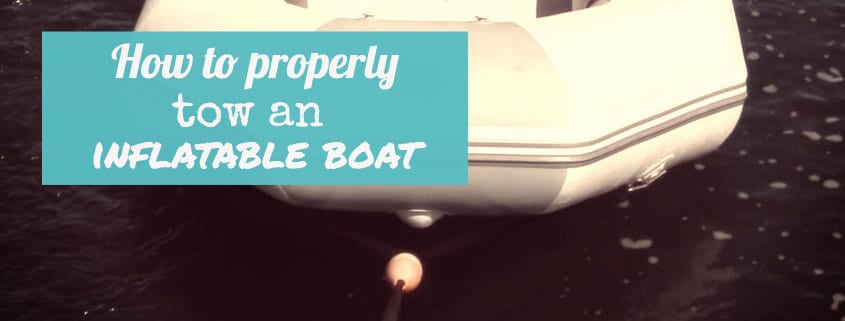
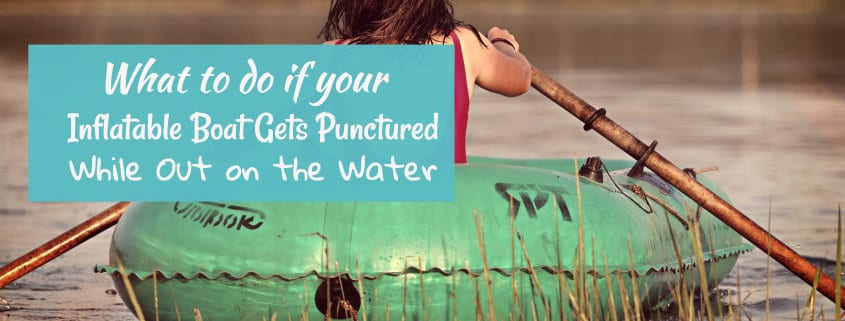
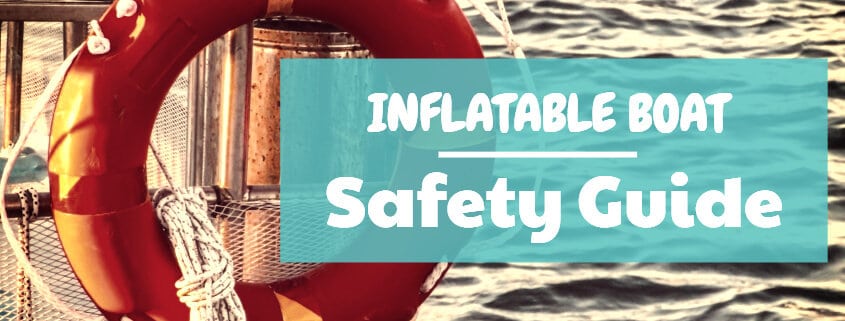

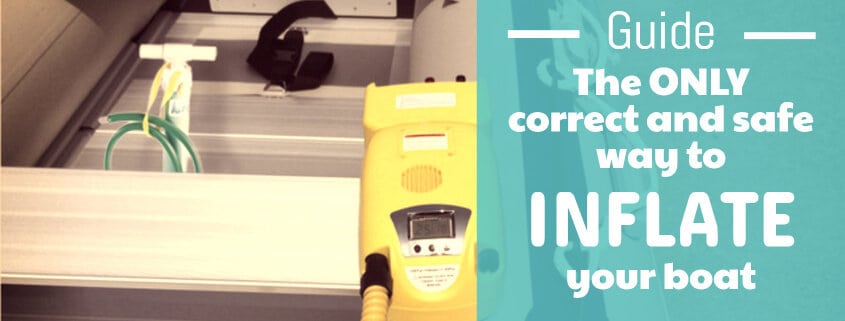
Some instruct to affix the 3 point towing bridle to a snubber which in turn is attached to to a line that is affixed to the stern cleats on the motherboat. Others say just affix lines from the stern cleats to the bridle without the snubber. Can you resolve these different points of view?
I’m looking for a little more detail on towing. There is tons of good info including yours in this article but no one seems to address these questions.
I have a 36 foot aft cabin power vessel. Kinda inconvenient getting back and forth between the helm and swim platform especially single hand but could be a mate task regardless but……
How do you deal with close quarter operations? Backing away from your dock into a narrow channel? The reverse, getting onto the dock coming back into a narrow channel? What to do with a dink trailing 60 or so feet and more concerning that 60 or so feet of “floating” line? still scares me getting into my props.
At that point because you are going so slow do you pull the dink up tight to maneuver then let it out once out of the harbor and/or pull it in coming back in? Do you devise some way to pull it up on the hip? (kinda hard in my case with the enclosed deck above the aft cabin).
Just looking for a little more detail on these and maybe although I don’t deal with it on Lake Erie what about locks? Anything extra to know there?
Thanks for any extra input.
Hi, I’ve been sailing a few times with a 41′ Bavaria Cruiser, so similar in size to your boat. We towed the dinghy most of the time with a floating rope. Getting it caught in the prop was never a concern, since the rope stayed on top of the water.
We pulled the dinghy onboard when there were tight areas to navigate, or when going faster.
When we docked in reverse into a berth, it became a 2 man job. One person had to pull the dinghy forward along the side of the sailboat. But when docking such a large vessel, you really need a helping hand. If you don’t have anybody, I would pull the dinghy onboard before entering the marina.
Hope this helps!
You forgot an important point. What type of rope should I use – polyester or something else?
Polyester would be a good choice, but since it doesn’t float, you’ll want to add a float on the rope. Don’t want it to get caught in the propeller of the towing boat. Also, make sure it is pre-stretched, or is low-stretch.
Polypropylene floats, so that is a good choice as well. The bad thing is that it deteriorates from UV…
The best choice though is nylon-polypropylene combo rope. It floats, but isn’t as susceptible to UV deterioration: https://www.neropes.com/products/anchoring-and-docking/product/detail/dinghy-tow-rope/